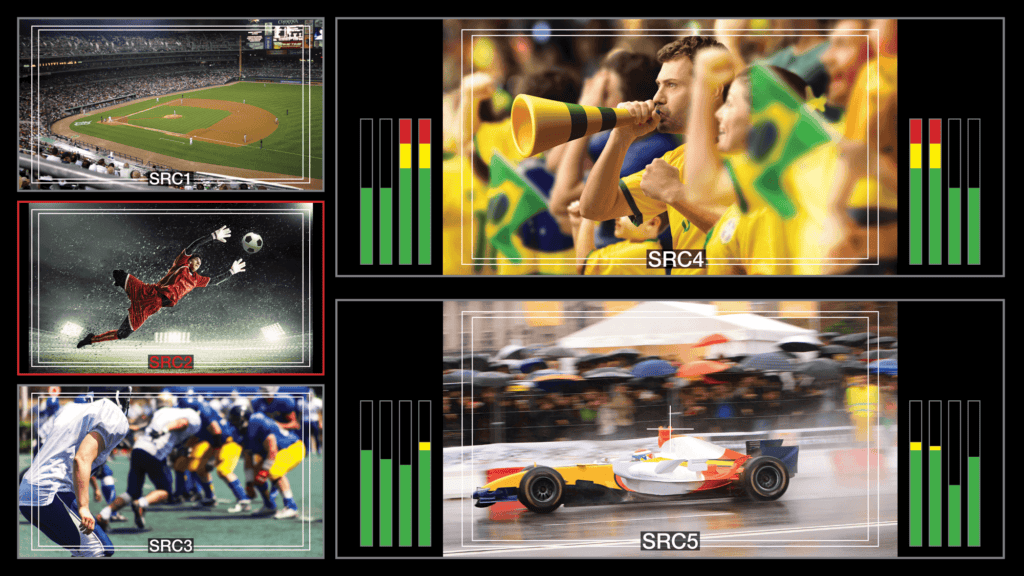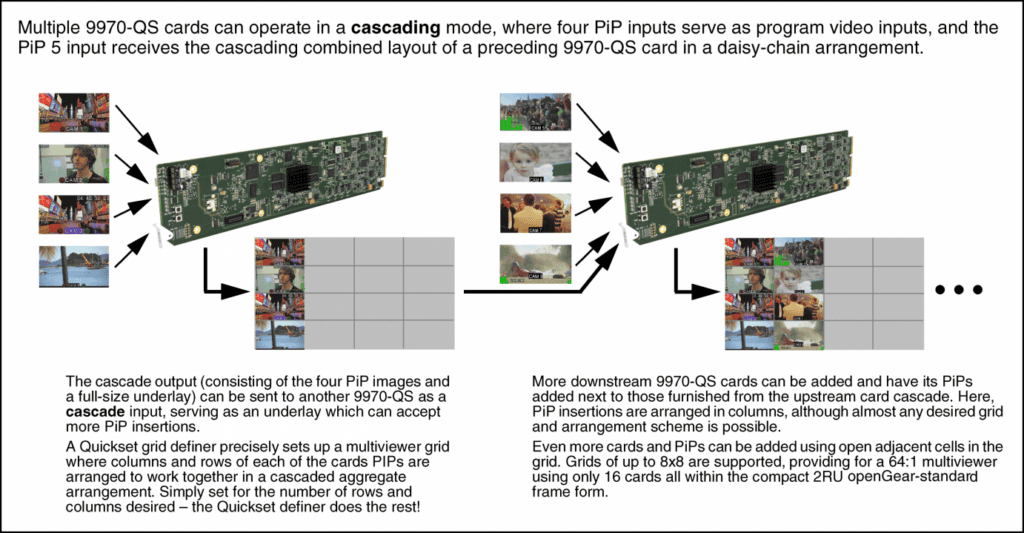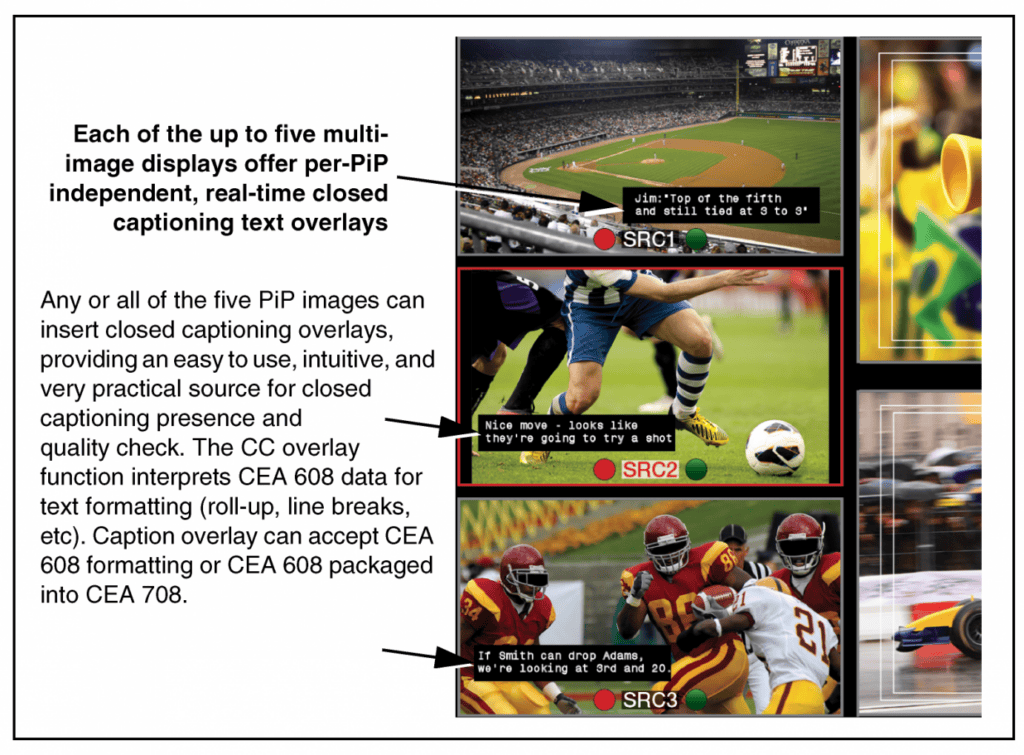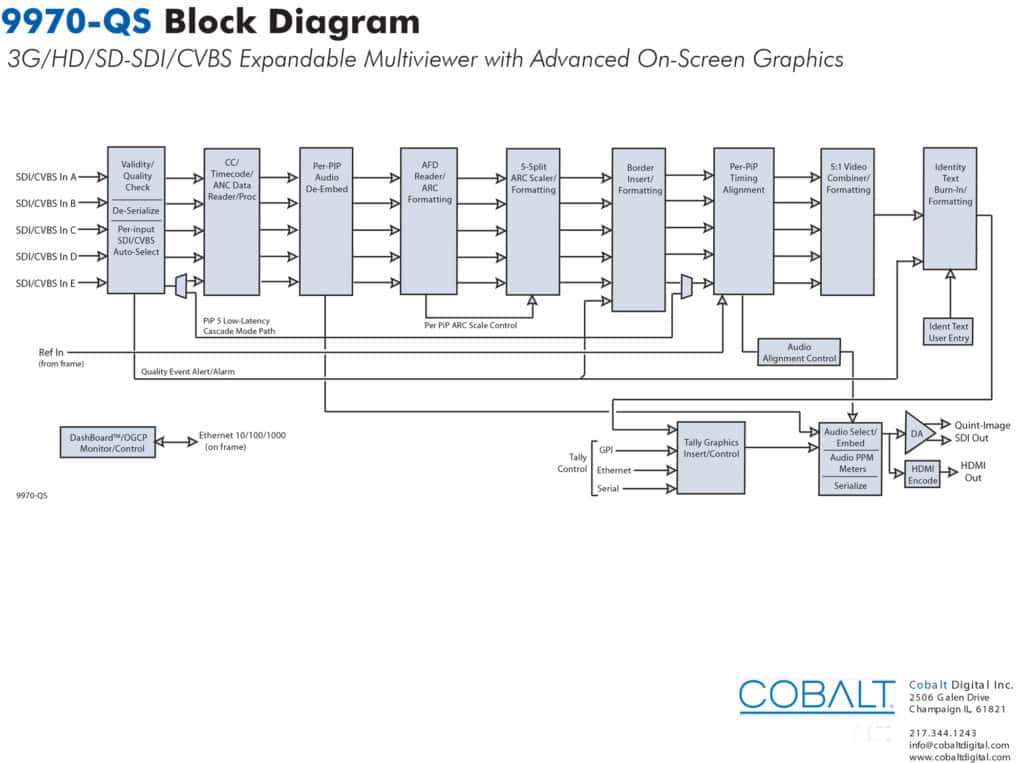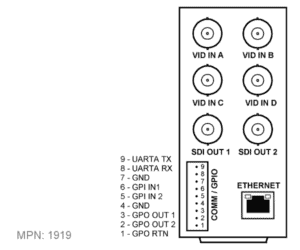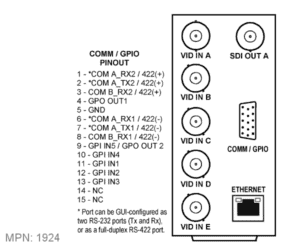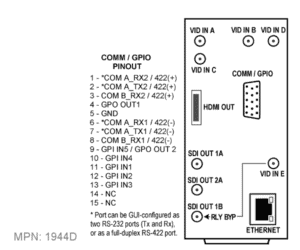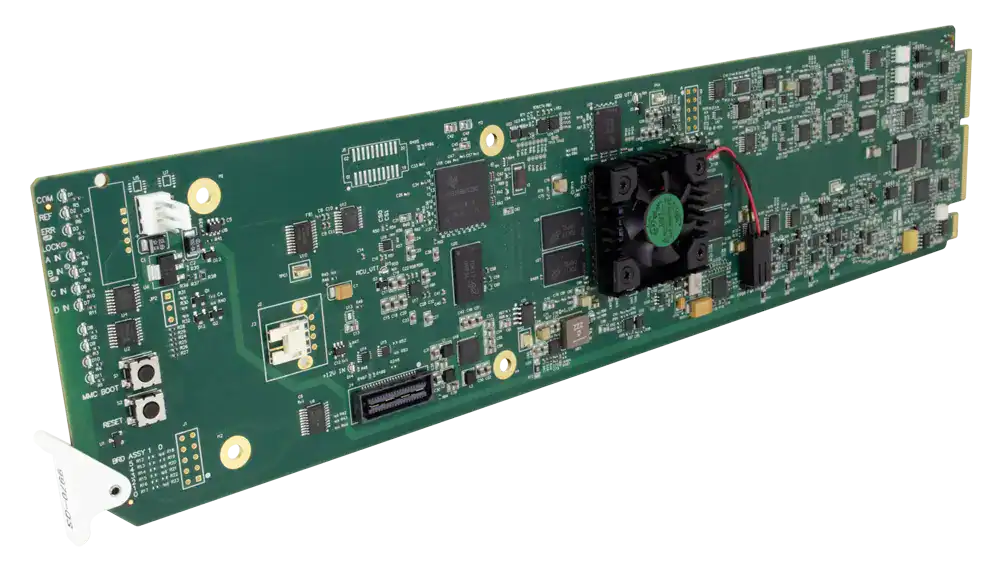

Product Categories
The multi-award winning Cobalt® 9970-QS 3G/HD/SD-SDI/CVBS Expandable Multiviewer with Advanced On-Screen Graphics integrates five discrete 3G/HD/SD-SDI or CVBS inputs onto a single 3G/HD/SD-SDI quint-split output, with each input image being flexibly inserted into the output image area.
Any template layout or custom layout changes can be done “on-the-fly” in real time, without tedious setup compiler or layout programs like many other split/multiviewer products. While the 9970-QS offers unprecedented flexibility, it also offers an unprecedented ease of use. Fully-flexible layouts using any of several one-button template presets or fully customizable layouts using easy to use sizing/positioning custom controls. Custom layouts can be saved to user presets.
Multiple 9970-QS cards can be cascaded to provide splits greater than the base quint-split. The 9970-QS PIP5 input can be used in a cascaded chain of 9970-QS cards that provides multiviewer layouts of up to 8×8 (64:1). The QuickSet grid definer precisely and easily sets up a multiviewer grid where columns and rows of each of the cards PIPs are arranged to work together in a cascaded aggregate arrangement. Low-latency processing allows multiple 9970-QS cards to be cascaded without significant accumulated delays within the chain.
Advanced graphics such as user identify text, PiP input video format, audio meter bars, tally/UMD, reticules, and timecode can be burned into any PiP with full user attributes control. CEA 608 Ch1 text strings can serve as user text overlays, allowing direct closed captioning presence/quality compliance checks for up to 5 simultaneous video streams per card. User-configurable Quality Check allows subjective criteria such as black/frozen frame or audio silence events to propagate an on-screen alarm/alert to the output image (such as alert text burn-in or border alert highlighting).
A master output up-down-cross convert scaler provides scale-to HD or 3G SDI formats for the combined multiviewer output, which also includes an HDMI output (with audio embedding) to directly feed a wall monitor.
The openGear® card-based form factor of the 9970-QS provides scalable, easily integrated multi-image functions for the 20-slot frame form factor with easy to use DashBoard™ remote control. Asynchronous inputs can be directly accommodated – each PiP input is provided its own independent timing alignment controls with lock to reference.
Full user DashBoard™ or Remote Control Panel remote control allows full status and control access locally or across a standard Ethernet network. Tally can be communicated by GPI, Ethernet, or serial interfaces.
The 9970-QS is also available in stand-alone form factor BBG-1070-QS.

Key Features
Supports all popular formats: 480i, 576i, 720p, 1080i, 1080pSF, 1080p
Scalable openGear® PiP solution. Card-based form factor provides high density, space-saving economical integration.
Easy, real-time "on the fly" custom layout changes without needing setup compiler or layout programs
Easy to configure PiP sizing and borders. Advanced graphics include audio meters, character burn, and reticules. PiP sizing/splits using one-button templates or easy-to-use, intuitive DashBoard controls. Custom settings can be saved to user presets.
Cascading Mode and QuickSet grid definer offers easy to set up scalable multiviewer functions (up to 64:1) using multiple cascaded (daisy-chained) 9970-QS cards. Two cards can provide a 9:1 multiviewer (depending on the rear module used) with up to 16 cards providing a 64:1 multiviewer. A single card provides up to 5:1 split, with up to ten cards installed per frame.
Cascade Config provides access to PiP controls for all PiPs from one card. Controls for all PiPs appear universally on each card in the chain. PiP numbers are correlated to your actual PiPs instead of fixed card-based port definers. Cascade Config consolidated control can span card chains within a frame or across multiple frames.
Closed captioning overlays provide direct closed captioning presence/quality compliance checks for up to 5 simultaneous video streams per card
Fully flexible input compatibility – mixed formats on inputs can be automatically sized and outputted in a combined output scaled to desired broadcast SD/HD/3G output format. Each input automatically detects and sets up for SDI or CVBS input. Supports asynchronous inputs using per-PiP ref lock. Per-PiP independent ARC settings and controls.
Wall-clock time burn-in on merged output or within PIPs. NTP sync via IP connection with timezone localization.
Low-power/high-density design – less than 18 Watts per card
Per-PIP audio meter, tally, user text, and timecode overlays. UMD text can be local user-entered or imported via router integration.
GPI, Ethernet, and serial tally inputs provide dual, per-PiP tally indicators
User quality criteria (such as frozen/black frame) alert/alarms can be propagated to output image with alarm text and border highlighting
Audio routing directs selected PiP audio to combined-stream outputs. Audio downmixing also provided.
DashBoard Output Preview function provides display of regularly-sampled screen captures in the card DashBoard page. Provides remote-access program video content/presence and multiviewer layout confidence monitoring via the card’s DashBoard display without needing collocation with the card or its input or output video signals.
3G/HD/SD-SDI 2x DA and HDMI with audio embed outputs
DashBoard™ remote control status monitoring and setup/control
Hot-swappable
Five year warranty
Need more products?
To expand your request to include multiple products or quantities, please visit our Request A Quote page.




